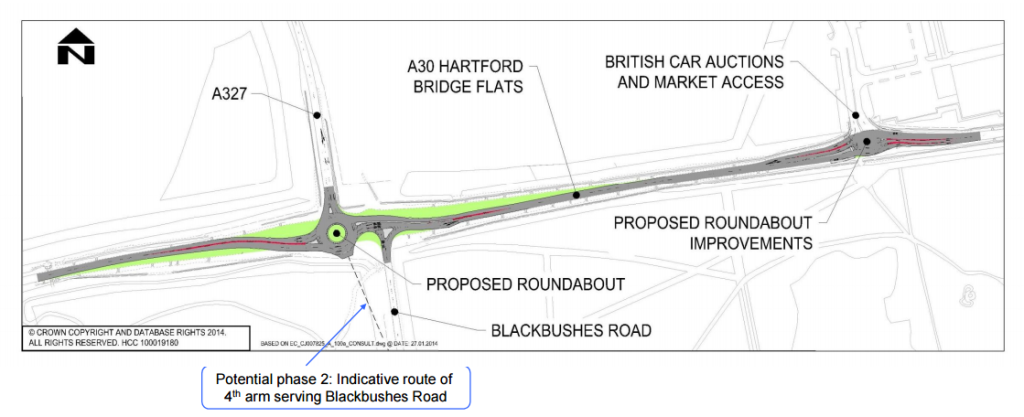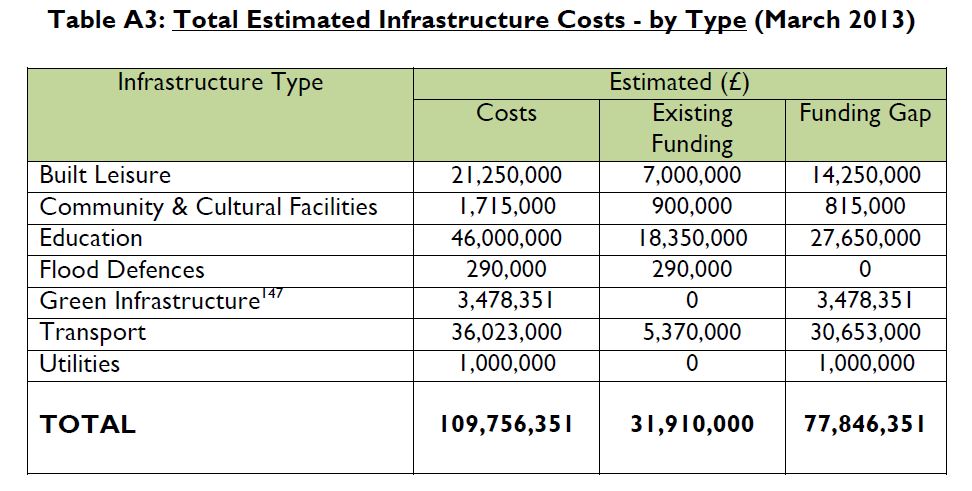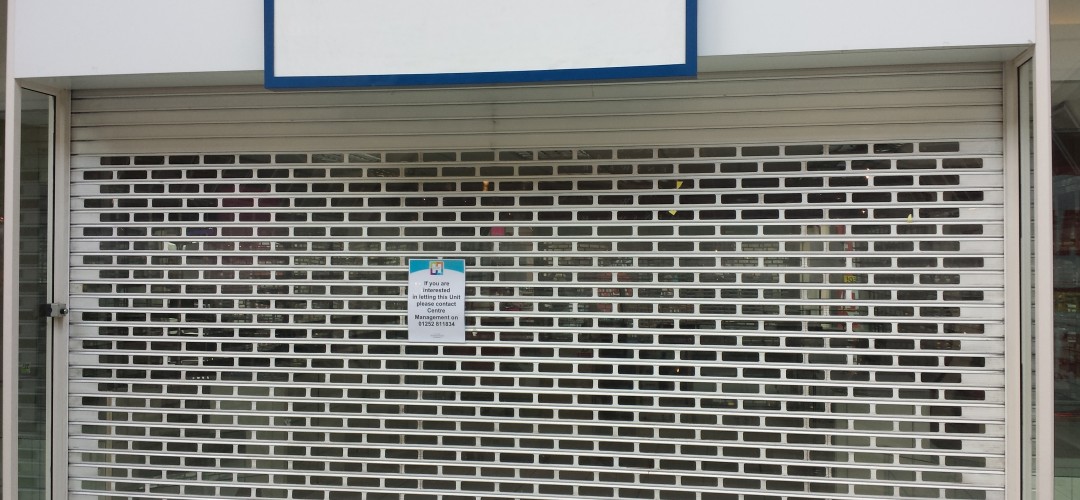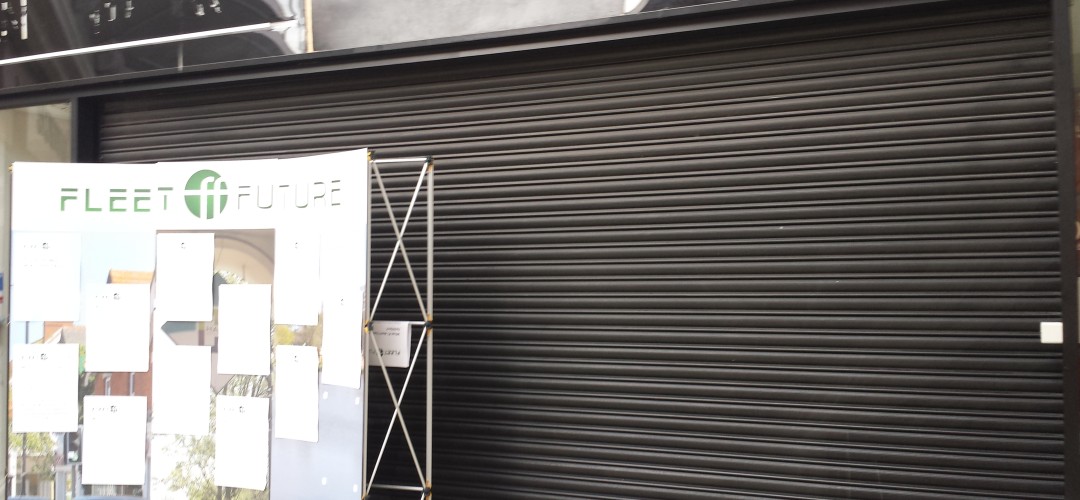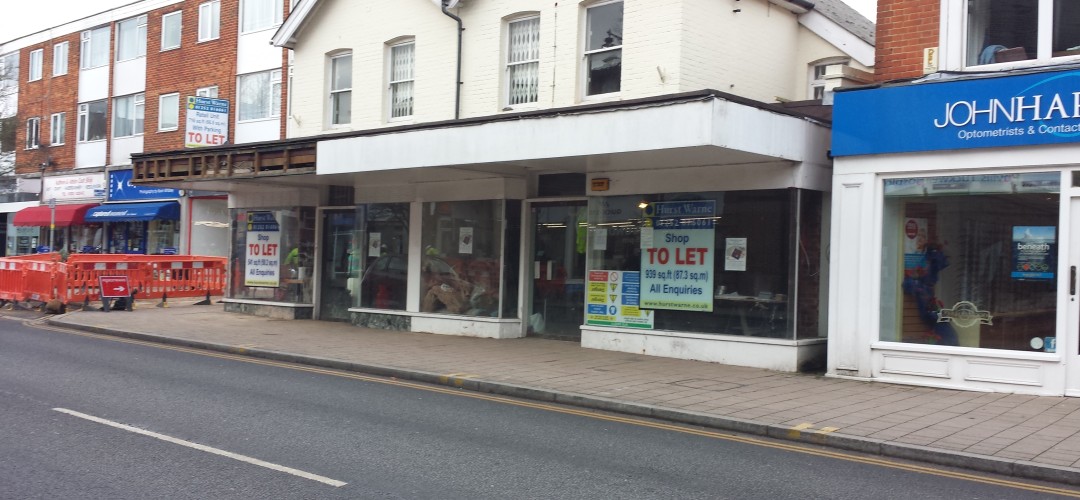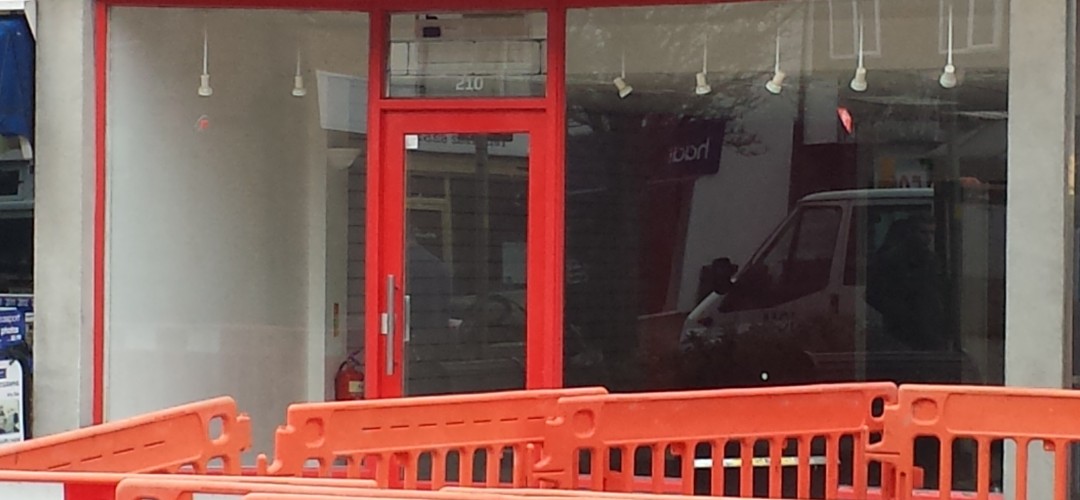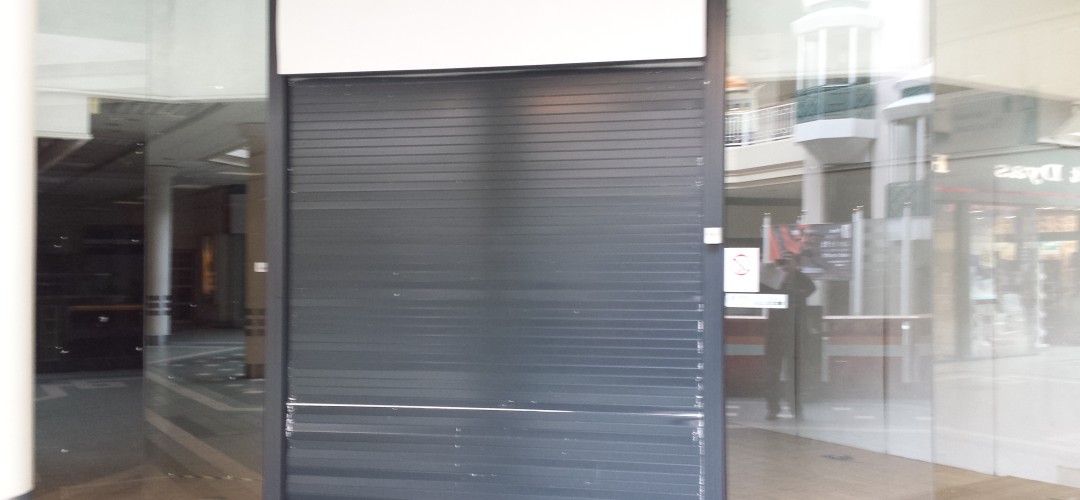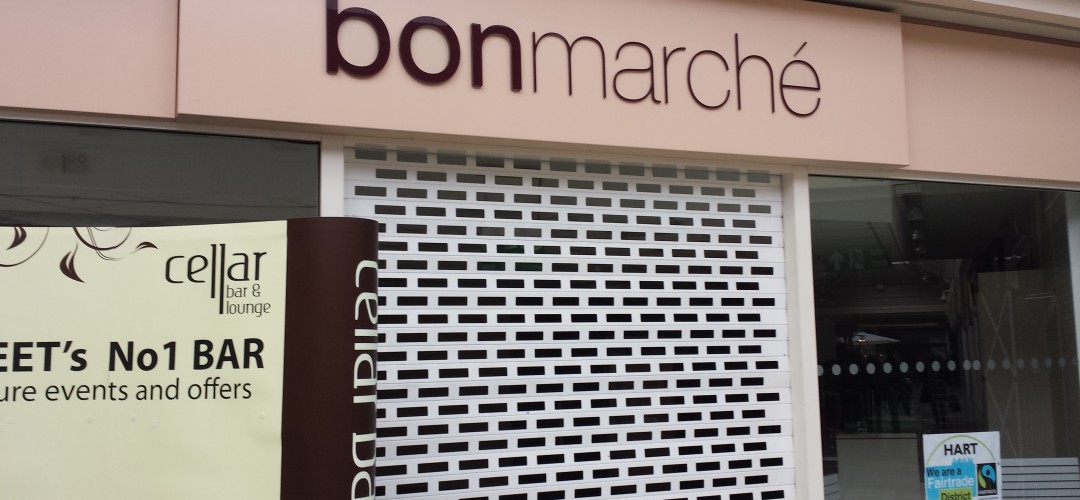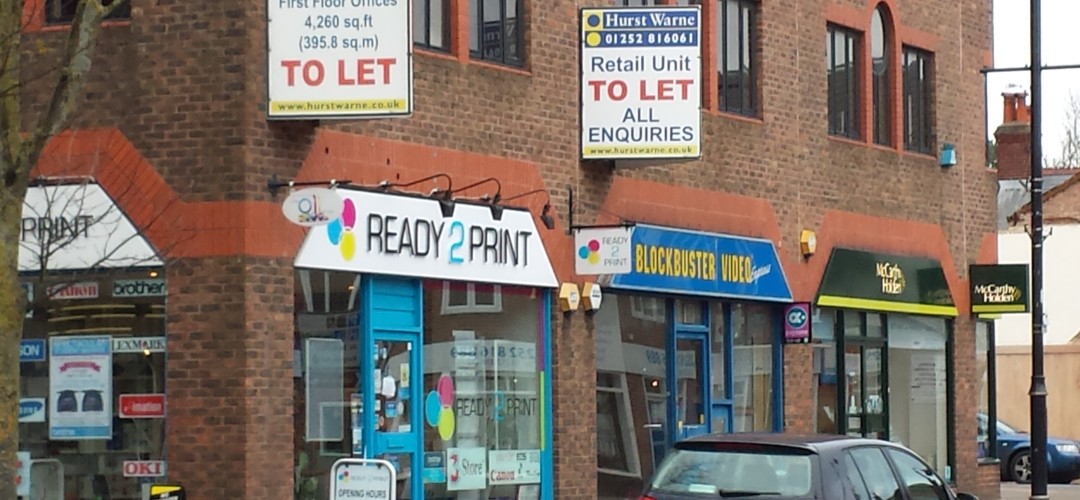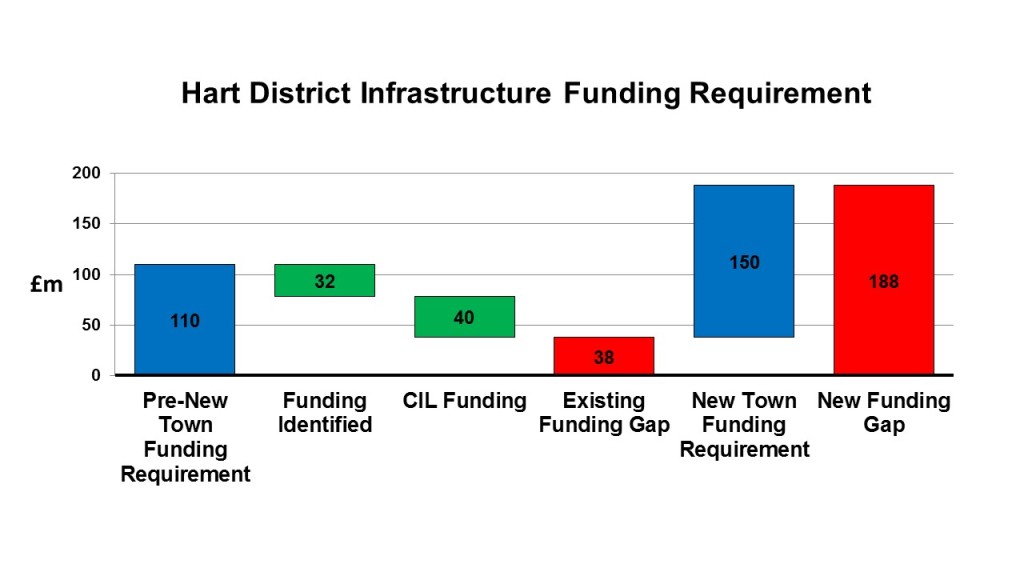
There is a potential infrastructure funding gap of up to £188m arising from the plan for a new town in Hart District. Much has been made of the infrastructure benefits that could be brought to the district by building a new town, however, it is not widely known that there is already a £78m funding gap for infrastructure. This does not include the infrastructure costs of a new town, nor the expected funding from a developer. We might expect Community Infrastructure Levy (CIL) funding – or S106 – to yield £40m from the developer, but the infrastructure costs of a new town could be up to £150m (not including costs of improving healthcare services), meaning that if Hart were to proceed with this plan, we would have a funding gap of £188m. Note that new analysis from Hart District Council indicates that costs could increase to over £300m.
This surely leaves the idea of a new town in tatters. Indeed it calls into question the whole idea of building an extra 7,500 homes in Hart, wherever they are built because there simply isn’t enough money to fund road improvements, new schools, new healthcare facilities or improvements to railway stations. One has to ask why the council are pushing through this idea when the costs are outrageous, the funding isn’t available and the results will be devastating for the local area?
If you would like the Government and Hart to think again, please sign the We Heart Hart (aka We ♥ Hart and We Love Hart) petition.
Of course the £150m cost of infrastructure for the new town is my estimate, but it is clear whatever the actual number there is a considerable gap to be closed between the cost of the infrastructure required for the Local Plan and the funding available.
The detail of the calculations to back up these numbers is shown below.
First, here is the table from the Hart Infrastructure Delivery Schedule:
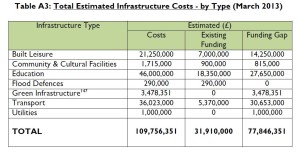
This shows that there is an existing gap of £78m. Some say that even this is an under-estimate. Crucially it does not include any infrastructure for the proposed new town: no new schools, no road improvements in that area and no improvements to the railways. And it does not attribute a cost to healthcare improvements like doctors surgeries or expansion of hospitals.
We might expect around £40m from developing 4,000 new houses that have not yet received planning permission in the local plan. This is based on only 2,400 houses being eligible for a CIL charge as 40% of what is built has to be “affordable” and does not attract a CIL charge. If each house is 95 sq m, and the charge per sq m is £175, then this results in CIL funding of £40m. If they use S106 instead of CIL, the yield can be expected to be broadly similar.
Note that CIL money has to be used for specific projects outlined in the Regulation 123 list. None of the projects on this list relate to building a new town. So all of that money raised will have to towards funding the existing gap. This leaves a gap of £38m before even considering the costs of infrastructure for the new town in Winchfield or anywhere else.
A back of the envelope calculation suggests that the proposed Hart new town will need around £150m of spending on infrastructure.
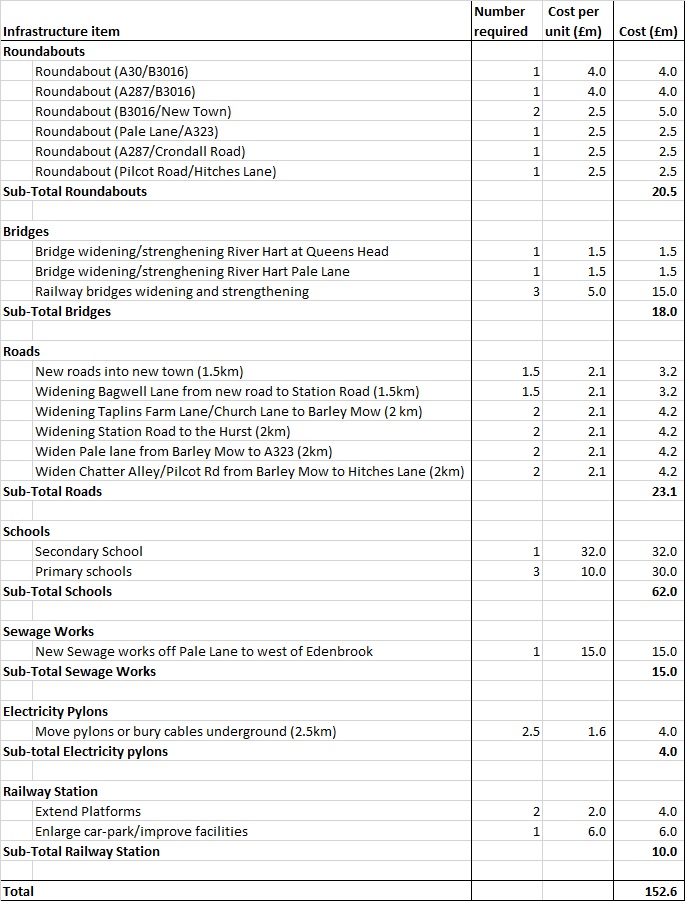
Hart / Winchfield New Town Infrastructure Costs
Of course, the road widening costs above will mean the destruction of miles of ancient hedgerow which is highly undesirable. Many of the other works would be very detrimental to the environment and the rural feel of Hart.
The sources for these number are as follows:
- Roundabouts. Cost of A30 improvements at Blackbushe is around £4m. Roundabouts at either end of the B3016 will cross a dual carriageway and will likely require some element of approach road improvement, so reasonable to assume the cost of each change will be about the same. I have scaled down this number for the additional roundabouts needed as they are simpler.
- Bridge improvements estimated. Both bridges over the river Hart (at the Queens Head pub and on Pale Lane) will need to be completely replaced and widened to cope with two way traffic and probably some road adjustments too. The work on the railway bridges will be considerable to widen them to cater for two way traffic underneath, and potentially to strengthen them for double decker trains. Plus the Barratts new town plan for Winchfield shows a new footbridge over the motorway that hasn’t been individually costed.
- Road costs estimated from this 2006 report from Imperial College London give a cost of £2.13m/km of new single carriageway road. Road lengths above taken from Google Maps.
- Schools. Hart Council quoted £32m as the cost of a secondary school. Scaled this down to £10m for cost of new primary school. Note that the secondary school is within a couple of hundred metres of the M3 and one of the primary schools is located between the M3 and the railway, hardly a suitable environment for children to grow up in.
- Electricity Pylons. No-one is going to want to live underneath high voltage electricity pylons, and two lots of high voltage pylons cross the planned area for the new town. Presumably they were put there originally because they weren’t near where people live. It costs £1.6m/km to lay new pylon runs and £20m/km to bury cables. For the purposes of this I have assumed that it costs a similar amount per km to move existing pylons. If they have to bury them, then that will cost £50m on its own.
Please download a poster: https://wehearthart.co.uk/home/get-involved/
Sign the petition: https://you.38degrees.org.uk/petitions/we-hart
Like us on Facebook: https://www.facebook.com/groups/IHeartHart/
Follow us on Twitter: https://twitter.com/WeHeartHart
